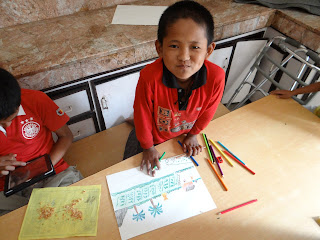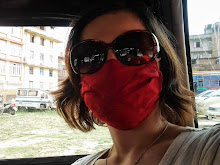Dilip drawing for tomorrow's charity event. He is the best drawer in the orphanage. While others draw from a book and other drawings, Dilip does his work on his own and he is still better than the rest.
Dilip was found on a street, small and all alone. He didn't even know his own name, so Pramila named him Dilip. His birthday is celebrated with all the rest of the children on Buddha's birthday last Saturday. A dentist a few years ago said that he is eight years old, so now he should be around 11.
For six consecutive years Dilip was awarded with the school's best student award.
Once he was diagnosed to be sick with meningitis. For a few months he was laying in a hospital fighting for his life. After the hospital he remained at home for a year, not going to school, but still at the end of the school year he passed all the exams and was moved to the next class. The only sign of his dire sickness is his slight and thin body. Other than that Dilip is as charming with his bright smile as he had been before the sickness.


















































